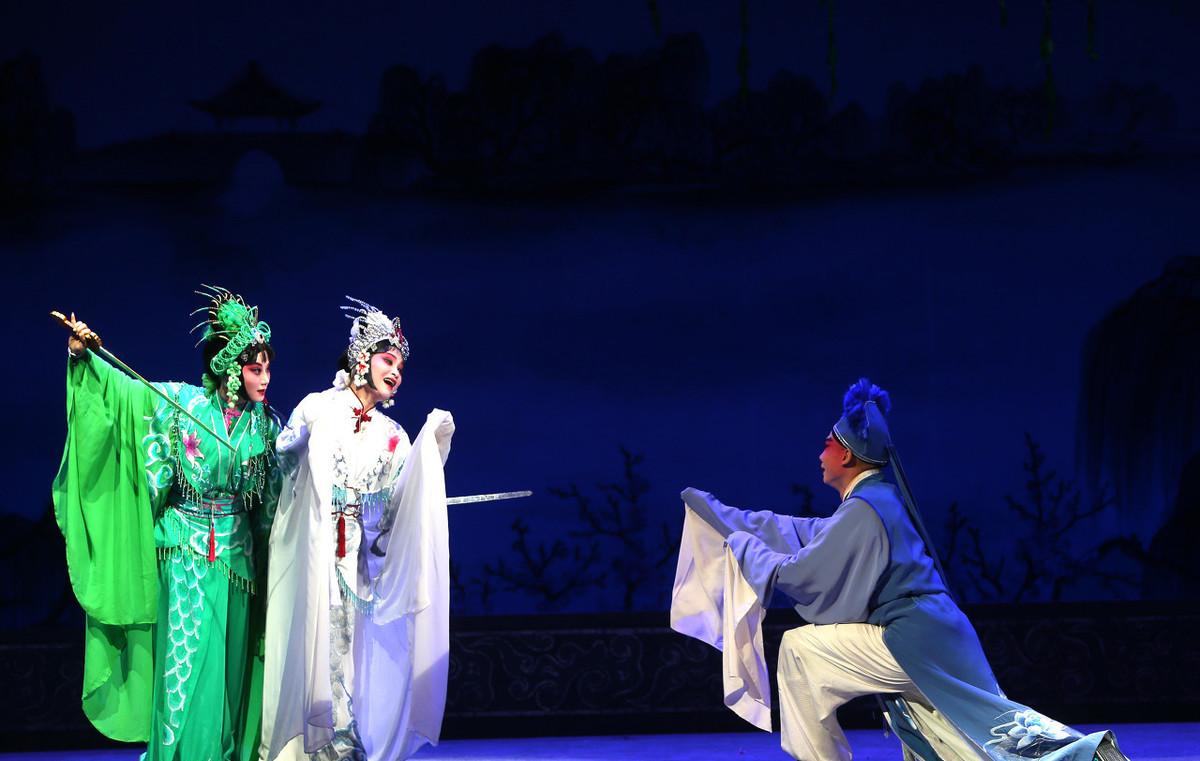Hua Dan is a traditional Chinese opera character, the image of a young or middle-aged woman, with a lively or spicy and debauched personality, often with a bit of comedy. The word HuaDan comes from Xia Tingzhi's "Qinglou Collection" of the Yuan Dynasty: "Whoever prostitutes break their faces with ink dots is Hua Dan." "And Qingyi is a kind of Danxing in Chinese opera, and the northern drama is mostly called Qingyi, and the southern drama is mostly called Zhengdan. It is named after the characters they play often wear cyan pleats. Mainly playing a solemn young and middle-aged woman, the performance is characterized by singing skills, the range of movements is small, and the actions are relatively stable. The rhyme is white, and the singing is heavy.
Tsing Yi and Hua Dan, in the traditional History of China, are like two characters with extraordinary styles and styles with enigmatic colors. And what is the difference between them?

1. Differences in personality
Qingyi plays a dignified, virtuous, kind, loyal young woman, whose personality is very in line with feudal aesthetic standards. At least their outward appearance, words and deeds are very dignified. Hua Dan, on the other hand, is lively and cheerful, naïve, and even spicy, with comedic overtones, they are often agile and clever. Especially with sharp eyes, dexterity at the waist and feet. From the words and deeds of the green and white two snakes in "The Legend of the White Snake", whether it is singing, expression, or action, such a difference can be seen.
2. The difference in the identity of the play
Most of the Qingyi play Miss Qianjin and Princess Houmen, who are well-bred women, while Hua Dan is often their follower, and the role of Ya Gui, but the two are intimate and tacit. This can be deduced from the tacit understanding of the words and expressions of the two snakes.
3, the difference in clothing
The most obvious thing is that Tsing Yi has water sleeves, while Hua Dan does not. The clothes in Qingyi are mostly long shirts, simple but noble and generous, which makes people feel that they are Miss Sven at a glance, even if they are down, they are simple and generous; while Hua Dan's costumes are colorful, with short shirts, pants or skirts, small jackets with aprons or shoulders.
4. The difference in singing voice
Qingyi sang a wide range of words and a complex singing voice; Hua Dan almost did not sing, mostly white. In singing and doing hitting, Qingyi mainly sings and supplements with doing; Hua Dan is more focused on chanting white and doing work, and rarely sings.
5. The performance of the action is different
The range of Qingyi's movements is very small, and it is very slow to move. Often it is slowly moving on the stage, slowly waving the water sleeve to express feelings, very euphemistic and subtle. They usually do not squint, smile without showing their teeth, even their sleeves do not show their fingers, they cannot walk fast, they must be steady and peaceful, so in the past, performing the normal posture of women on the stage, whether sitting, standing, or walking, requires one hand to be horizontal, covering the chest and a piece in the middle of the stomach, one hand is pulled next to the body, and always slowly, or sit, or walk, often to maintain such a posture.
Hua Dan's mood and sorrow are very obvious, and their expressions, actions, and words unabashedly tell the audience their mood at this moment. In "The Legend of the White Snake", the white snake rotates in a circle when expressing grief, waving the water sleeve; while the white snake expresses emotions by making full use of its expression and movements - when happy, it claps its hands and jumps on its feet; when it is angry, it is high in the mouth, and its head is swinging to the side, and even the hand is thrown, the foot is stomped, very spontaneous.